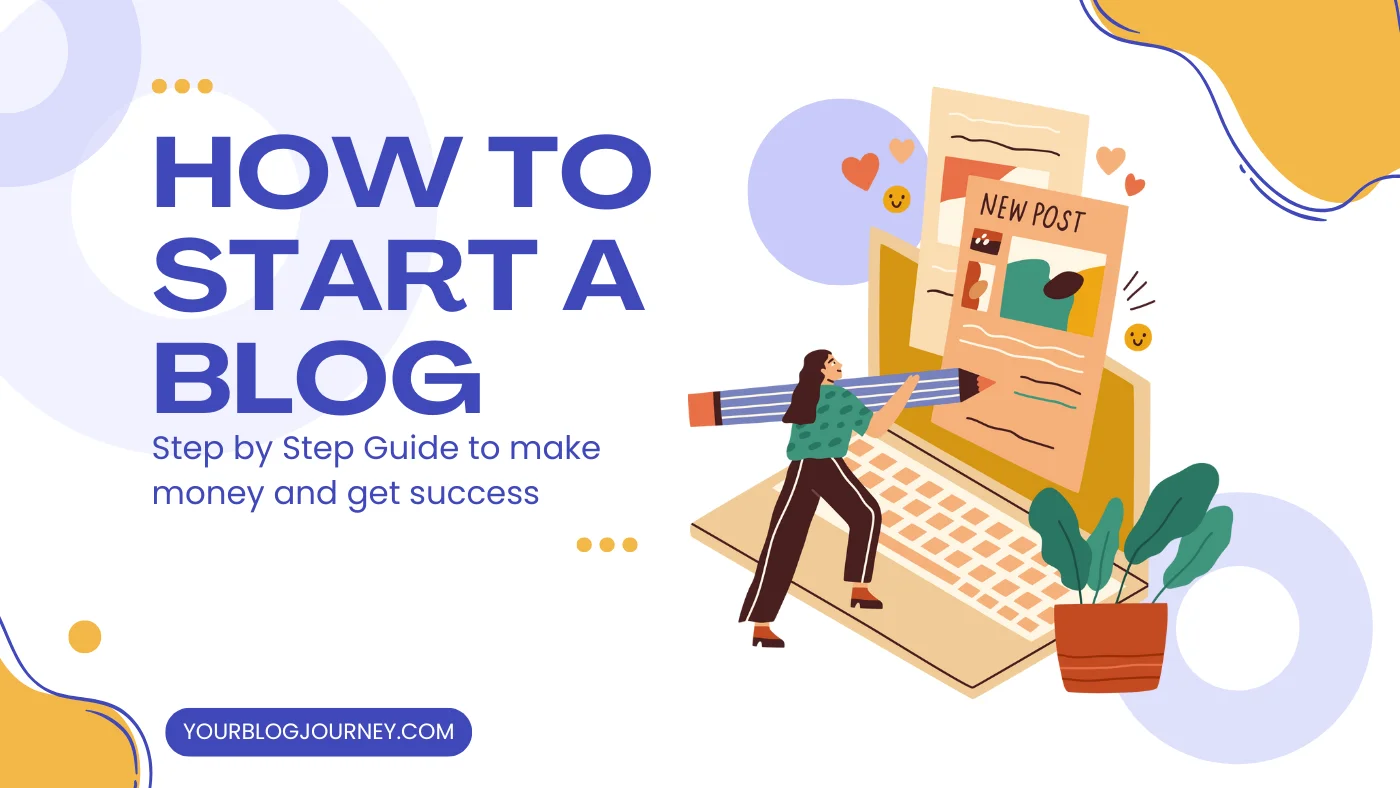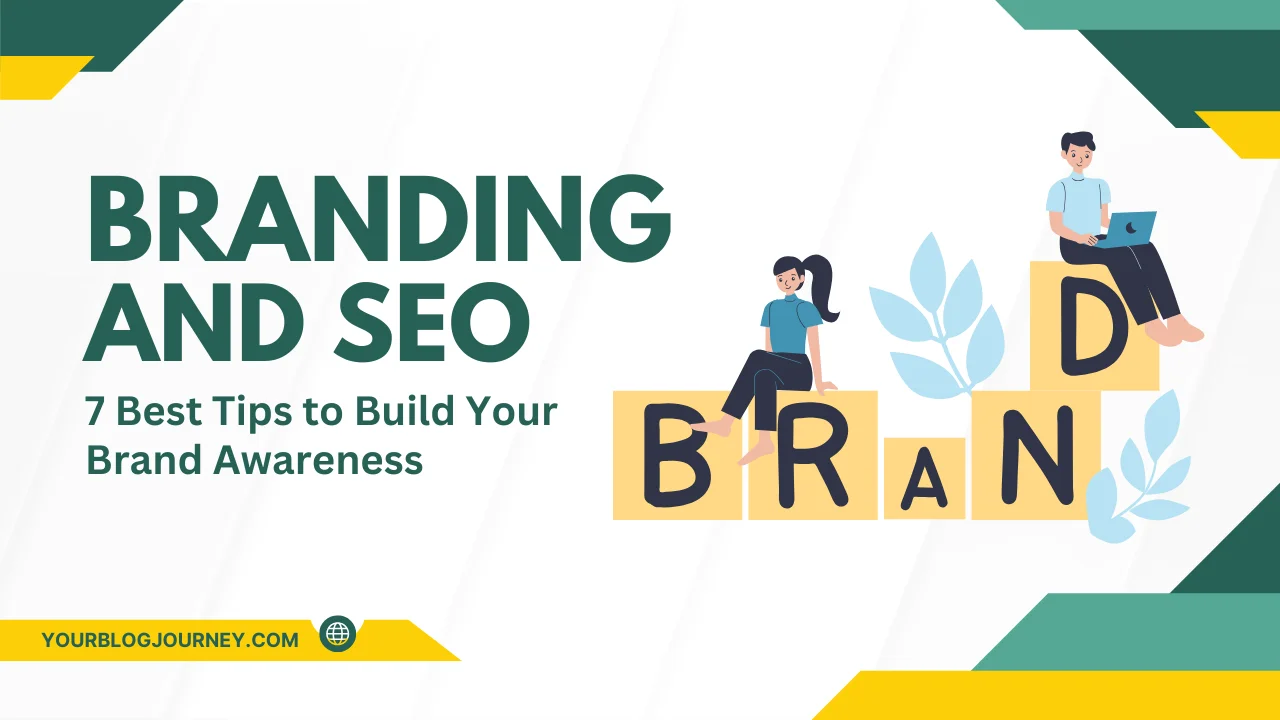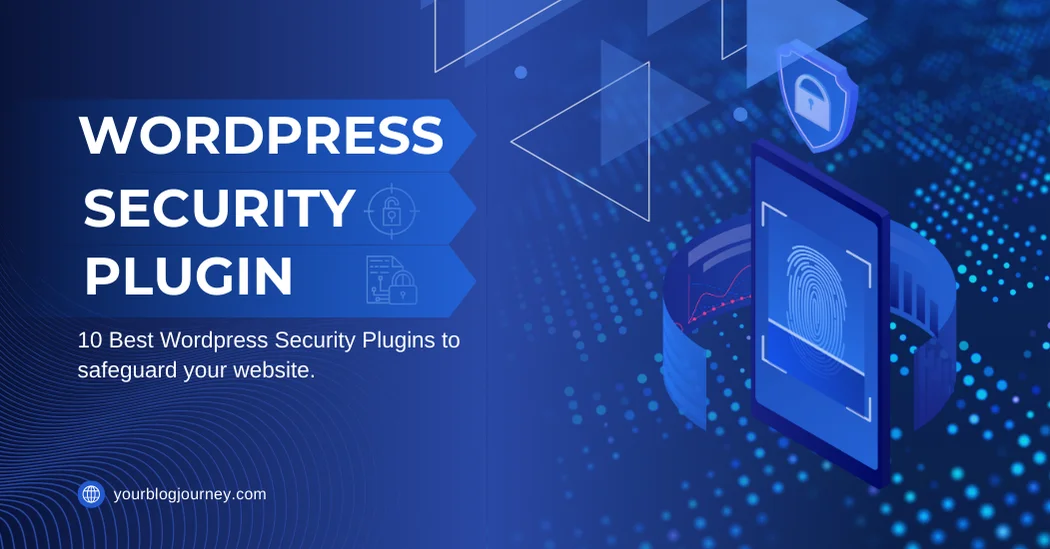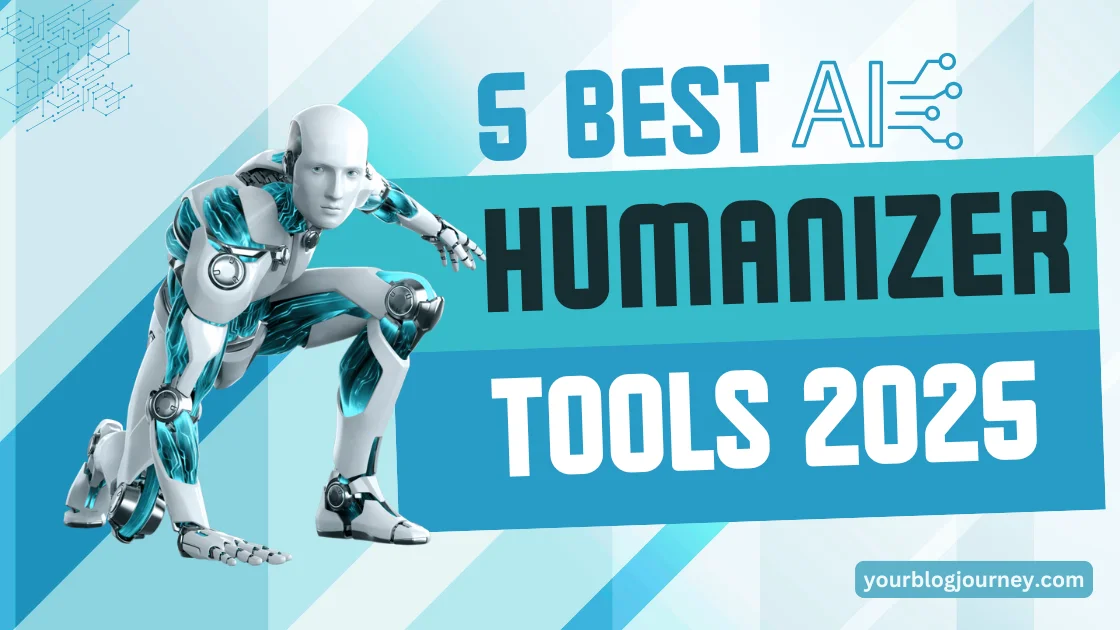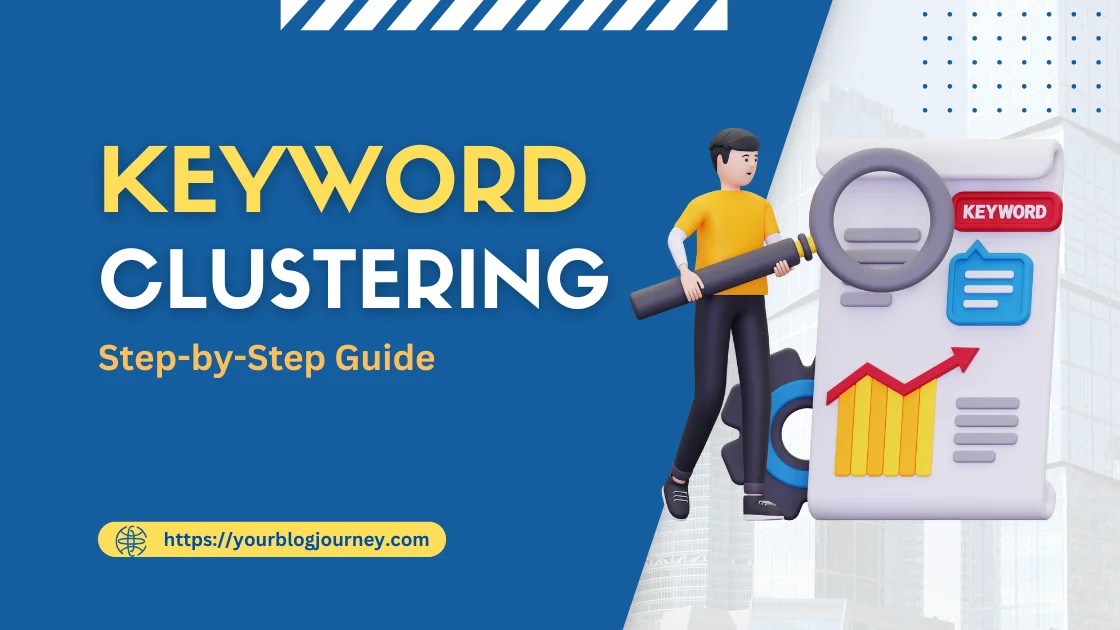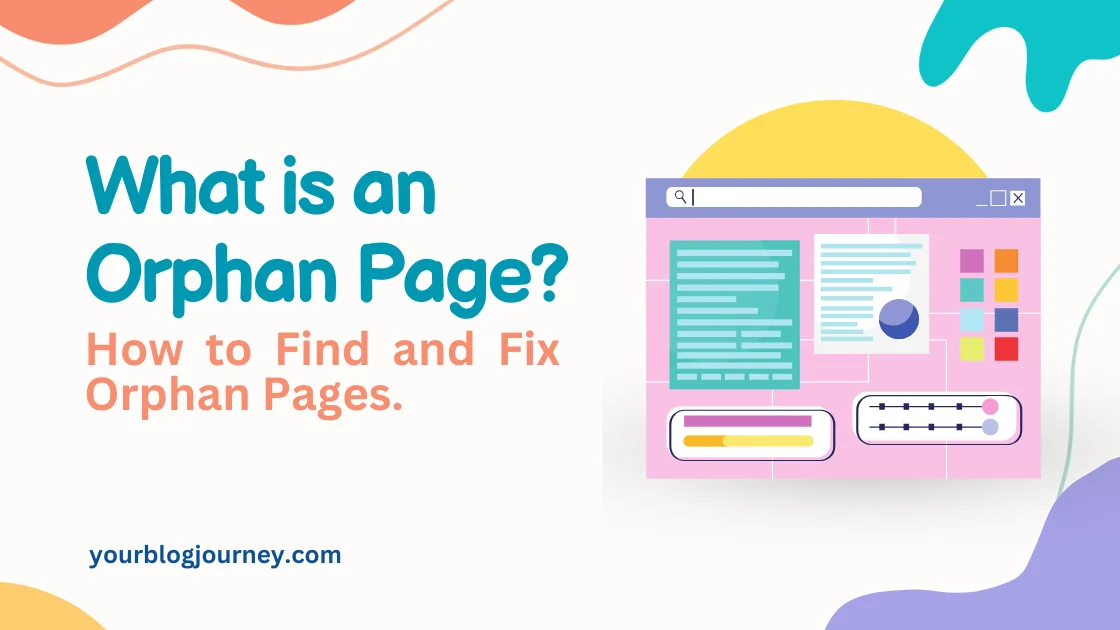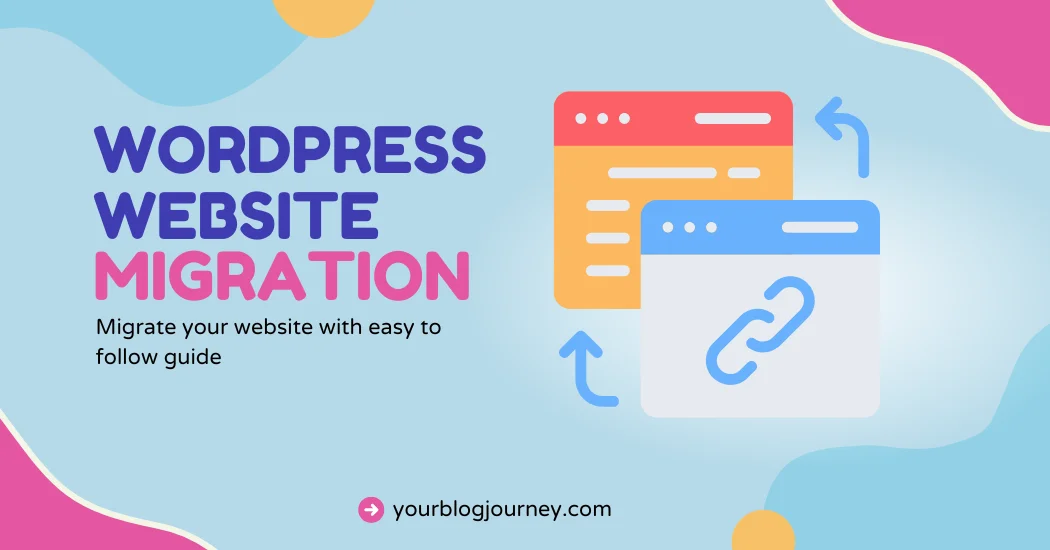If you are considering starting a new blog in 2025, you have come to the right place. But first, understand what a blog is? A blog is a platform for sharing your thoughts, ideas, and experiences and providing useful information to readers. This article on how to start a blog will provide a simple, step-by-step process for starting your first blog.
How to Start a Blog
Let’s learn how to start a blog in 6 easy steps. Each step has some key points to fine-tune your blogging journey.
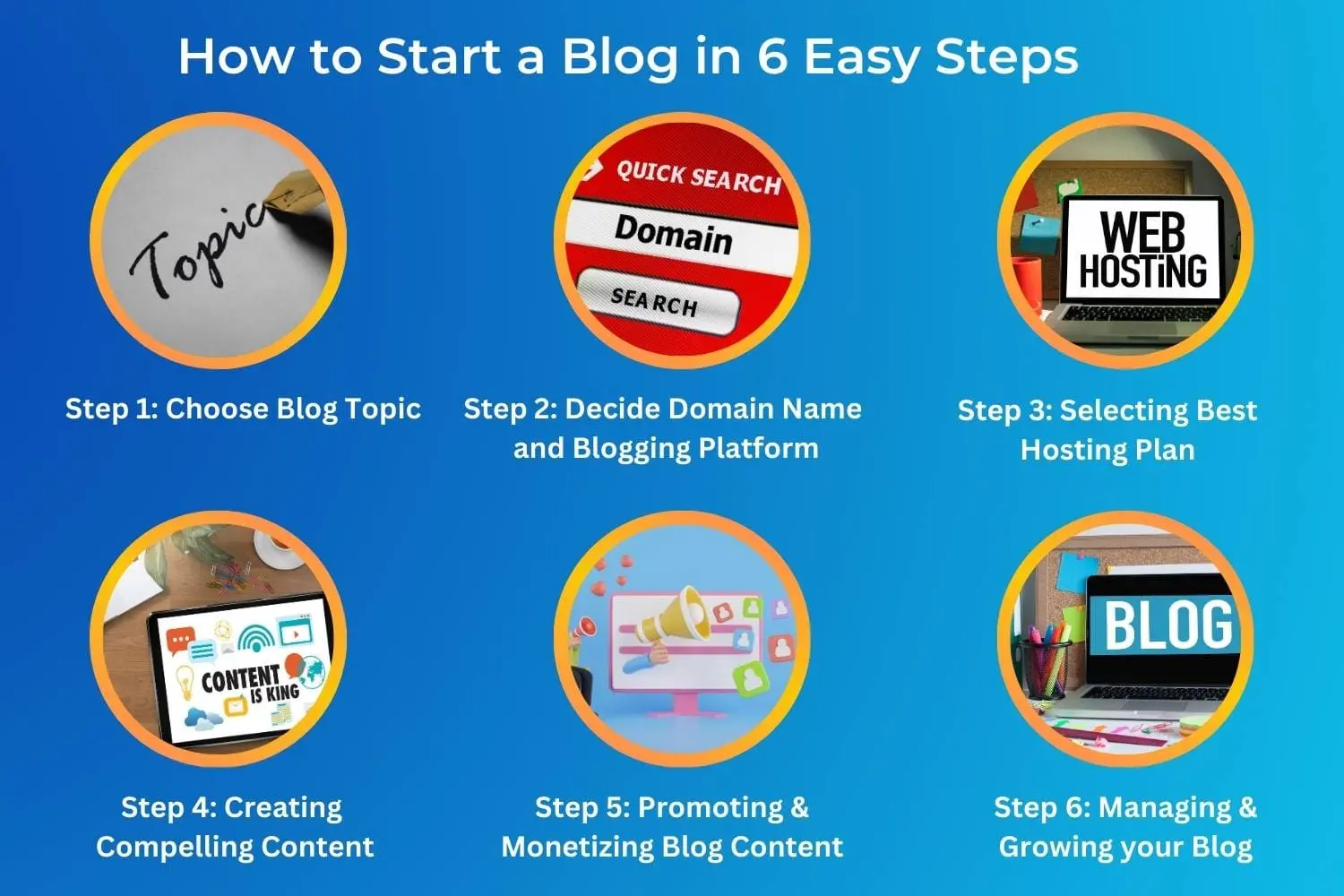
Step 1: Choosing Your Blog Niche
Your blog idea should be something you’re passionate about, whether it’s cooking, fashion, travel, or technology. You can also get ideas for your first blog from subjects you are curious about or a new post that excites you.
My first Blog: I started on small kids’ poems, short stories, slogans, etc. I got this idea when my kids were small and searching for new poems to complete their school homework. Just look around; you will get a lot of ideas.
Remember, if your personal blog topic idea is related to a micro niche, it is more likely to succeed, as microblogs attract good traffic.
Check useful, practical tips on How to Choose a Profitable Blog Niche.
Step 2: Deciding a Domain Name and Blogging Platform

The next step is how to choose a domain name. Use the domain name as a house address to identify your blog online. Here are some useful tips on how to choose the best domain name for your blog:
- Capture the essence of your blog using the domain name.
- Keep the domain name small and catchy. My blog’s domain, Yourblogjourney, is 15 characters long, as it captures the theme of my blog.
- It is advisable to capture one or two keywords related to the core Blog theme in your domain name to maximize traffic. However, the content of the Blog matters, and there is no harm in having keywords in your domain name.
Useful resources to find a good domain name:
- You can use Instantdomainsearch to check the availability of your domain name.
- Chatgpt and Claude are great AI tools for suggesting a name for your blog. Their free versions are good enough to provide domain name suggestions.
- You can also try Domainwheel and Namify, which provide a unique and memorable domain name.
Selecting the Right Blogging Platform
Now, it’s time to pick your blogging home. There are a bunch of blogging platforms out there, like WordPress, Blogger, and Medium:
- WordPress is the best blogging platform. It’s versatile and customizable, perfect for anyone who wants to create a blog to reflect their unique style.
- Blogger is more straightforward and beginner-friendly. This platform is great if you’re just about to start blogging and want a free blog. Another advantage of Blogger is you can start writing your blog post free without buying any hosting plan.
- Medium is great if you want to start blogging and focus more on writing and less on technical stuff. Plus, it has a built-in audience ready to read your posts.
Pro Tip: I would advise you to start your first blog on WordPress. Setting up the blog is very easy, and everything is customizable. Recently, WordPress has added many useful features. First, explore it and then decide.
Step 3: Selecting a Hosting Plan
When you’re starting to write your first blog post, choosing a hosting plan is one of your first big decisions. Think of hosting like taking space on the internet for your blog. It’s important to go with the right plan that fits your needs and budget, especially when looking for hosting that offers a free domain name. Here are some key points to consider:
- First, consider your budget. Hosting plans come in all shapes and sizes. Look for a plan that offers a good balance of features and affordability.
- Next, consider the technical stuff. Ensure the hosting provider offers reliable uptime, fast loading speeds, and excellent customer support.
- Remember scalability. As your blog grows, you’ll likely need more resources to handle increased traffic. Choose a hosting plan that allows you to easily upgrade or expand your resources as needed.
- Security – Look for a hosting provider with robust security features like SSL certificates, regular backups, and malware protection to protect your blog from cyber threats.
- User experience. Look for hosting providers that offer easy-to-use tools and resources for beginners.
My personal experience: I have used many hosting plans from different companies, such as Blue Host, Hostgator, Verpex, etc. If you are on a budget and want a reliable shared hosting plan, Verpex and Hostinger are good options. Verpex customer support is excellent. I recently moved from the shared hosting plan of Verpex to the Hostinger Cloud plan, and there have been no issues so far.
If you want to know the best web hosting for beginners, then check this article – Best Web Hosting for Beginners: Top 5 Picks for New Users
Step 4: Creating Compelling Content
Content is the king. Google ranks those blogs that have good-quality content. While creating a compelling content, there are a few key things to consider:
- Know Your Audience: Try to know your audience, i.e., what they like to read and their questions. Tailor your content to meet their needs and address their points. Tools like Google Analytics or social media insights can help you understand your audience better.
- Images and Videos: Adding images, videos, and infographics to your blog posts can make them more visually appealing and engaging. Tools like Canva or Adobe Spark can help you create eye-catching visuals to grab your readers’ attention.
- Create your personality: Create your own writing style. Be authentic and transparent, and let your unique voice shine through. Share your personal experiences, insights, and opinions.
- Engage with your readers: Make it easy for your readers to engage with your content. Encourage comments, questions, and feedback from your readers to create a connection with your readers.
In the early days of your blog, focus on creating quality content and building genuine connections with your audience. Don’t get discouraged by low traffic or engagement metrics; every successful blog starts somewhere.
If you want to create compelling content, check this article on Top 10 Tips on How to Create Compelling Content
Setting up SEO for the Content
So, you’ve got your blog up and running, but how will people find it? SEO (Search Engine Optimization) is your secret weapon for increasing your blog’s visibility and attracting more readers. Here are some tips and tools to help you take your blog to the next level.
- Keyword Research: Identify relevant keywords related to your blog’s topic. You can use tools like Google Keyword Planner, Ahrefs, Semrush, or Ubersuggest to discover popular search terms and write content accordingly.
- Optimize Your Content: Your blog’s content should be SEO-optimized. Once you’ve found your keywords, strategically incorporate them into your blog posts. Include them naturally and organically in your titles, headings, meta descriptions, and content.
- Optimize Your Images: Use images when designing your blog! Also, use descriptive filenames and alt tags that include relevant keywords to help search engines understand what your images are.
- Internal Linking: Use Internal Linking. This helps search engines crawl and index your content more effectively, keeps visitors engaged, and encourages them to explore more of your site.
- Build Backlinks to increase the visibility of your blog. Contact other bloggers or websites in your niche and ask them to link to your content. Backlinks from reputable websites can boost your blog’s authority and improve its ranking in search engine results.
Step 5: Promoting & Monetizing Your Blog
Promoting your Blog
You’ve worked hard to create killer content; now it’s time to share it with the world.
First things first, leverage the power of social media. Share your blog posts on platforms like Facebook, Twitter (Now X), Instagram, and Pinterest to reach a wider audience. Use eye-catching visuals, catchy captions, and relevant hashtags to grab people’s attention and drive traffic to your blog.
Tools like Buffer or Hootsuite can help you schedule and automate social media posts. This can save you time and effort and make your blog profitable.
Engage with your readers! Respond to comments and feedback to build a loyal community around your blog content. Collaborate with other bloggers or influencers in your niche to reach a wider audience.
Check these 20 effective proven strategies How to Promote a Blog
Monetizing your Blog
It’s time to turn your passion into profit by exploring ways to make money from your blog. Monetizing your blog is like unlocking its money-making opportunities.
Consider affiliate marketing as one of the primary ways bloggers make money. This involves promoting products or services on your blog and earning a commission for every sale or referral you make. Tools like Amazon Associates or ShareASale can help you find and manage affiliate partnerships.
Sponsored content and brand collaborations are other ways to monetize a blog. To find sponsorship opportunities, reach out to brands in your niche or sign up for influencer marketing platforms.
Remember display advertising! You can place ads on your entire blog and earn money based on the number of clicks or impressions they receive. Platforms like Google AdSense or Mediavine can help you get started with display advertising.
Consider creating and selling your own products or services directly from your blog. Whether it’s e-books, online courses, merchandise, or consulting services, there are plenty of opportunities to monetize your expertise and knowledge. Tools like Shopify or Teachable can help you set up an online store. While there’s no set amount you can expect to make from your blog, you can create a profitable income with dedication and planned monetization efforts.
Check these top 10 profitable tips on How to Monetize a Blog
Step 6: Managing and Growing Your Blog
Consistency is the key to building a loyal audience base. Set a realistic blogging schedule to update your blog page regularly, whether once a week, twice a month, or daily. Your readers will come to expect a new WordPress blog post from you regularly, so make sure to stick to your schedule as much as possible.
Track your ideas, drafts, and publishing schedule. Use spreadsheets, calendars, or dedicated blogging apps to organize and plan your content.
Keep an eye on the numbers and explore ways to make your blog successful. Tools like Google Analytics track your blog’s performance and see what’s working (and what’s not).
Rome was not built in a day! Be patient and keep posting; your blog will become profitable one day.
Dealing with Challenges
Feeling stuck? Writer’s block happens to the best of us. Take a break, walk, or try writing about something completely different. Don’t let negative feedback get you down in your blog journey. Use it as fuel to improve and grow as a blogger.
Face the ups and downs of blogging with a smile. Each experience will shape you into a stronger and wiser blogger. Get practical and useful tips from this article – Blogging Mindset Practical Tips.
When you want to start a blog, don’t compare your beginning to someone else’s middle; progress takes time and effort. Remember that every successful blogger started from scratch, just like you. Focus on your journey and progress as you create and profit from a blog.
If you think that is it too late to start blogging, you have to rethink, as it’s never too late to convert your passion into your profession. Check out this article on
Additional Tips and Resources
- Keep learning new things every day, as there is a lot to learn in Blogging.
- Your blog is your space to express yourself, so don’t be afraid to try new things and see what works best for you.
- Celebrate every little victory! Whether you’ve reached your first 100 subscribers or received your first sponsored collaboration, take a moment to pat yourself on the back.
Final Words
Remember that blogging is a journey, not a destination. Enjoy creating a blog, learning, and growing as a blogger. The initial steps in starting a blog might seem difficult, but trust me, it’s worth it. So, what are you waiting for? Take the plunge and share your passion with the world through your first blog post. Your blog could become the next big thing in the blogging community!

